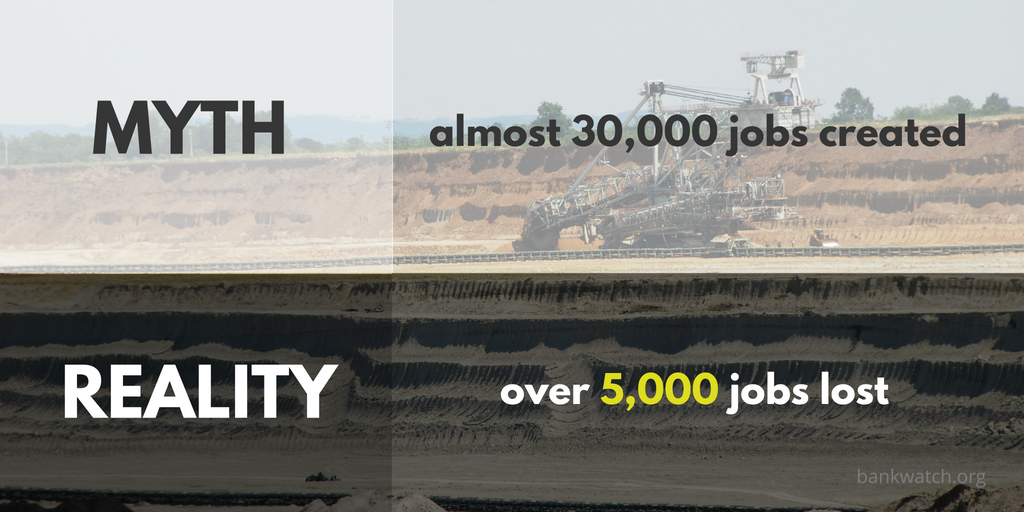
Most of Europe has started phasing coal out of its power sector, but Balkan politicians persistently claim that building new coal plants will bring jobs in the lignite industry. Such rhetoric is misleading communities and jeopardises the chances of a just transition.
Hardly a month goes by without headlines proclaiming that the planned Tuzla 7 power plant will save 3,500 jobs in the Kreka mine in Bosnia-Herzegovina or that the Kosova e Re plant will lead to 10,000 new workplaces.
We have identified claims that no fewer than 10,030 jobs would be maintained and 17,600 new jobs created by the new plants planned across southeastern Europe. However, our new Bankwatch analysis finds that due to the need to increase mine productivity, a reduction of workplaces by around 5,170 is more likely.
Similar job-creation promises were made for the Šoštanj 6 plant in Slovenia a few years ago: it would, it was claimed, preserve around 3,500 workplaces in the nearby Velenje underground lignite mine. Yet by the end of 2016, just a few months after the plant started commercial operation, the number of employees at the mine had shrunk to 1,243.
This figure looks set to undergo further rapid decreases as the mine grapples with the impossibility of supplying coal at a price the ailing Šoštanj power plant can afford to pay: in 2017 the plant ran up losses of EUR 32.5 million.
The lessons, it seems, have not been learnt by Slovenia’s southeast European colleagues. Decision-makers across the region are still bent on building new coal power plants, spurred on by the availability of mostly Chinese financing.
Yet as the countries have all committed to implement EU energy legislation to participate in a single electricity market, their electricity sectors need to become much more efficient than they are now.
The current levels of employment cannot be maintained, and some companies have begun reducing their workforce. Pljevlja coal mine in Montenegro, for example, has decreased its workforce from 1,200 to 750 in the last seven years.
Others such as the Gacko, Ugljevik and Banovići mines in Bosnia-Herzegovina, continue to increase their workforces to the detriment of already low productivity.
Trying to delay the inevitable with promises of new plants will have very little impact on this overall trend.
What the southeastern European countries we analysed all have in common is that neither the plant owners nor the respective governments admit that the coal industry is in terminal decline. Even where it is recognised that job reductions are needed, the main goal is to make the sector more competitive rather than recognising its demise.
Nor do governments have a convincing plan to ensure that the transition of the coal mining communities doesn’t follow the all-too-familiar model of short-term compensation and long-term social decline suffered by eg. the Romanian hard coal industry.
Fair and inclusive plans, developed from the bottom up, are urgently needed to transform coal-dependent communities. The challenge is to plan alternatives as soon as possible and do so in a manner that is representative of the interests of workers and communities from the coal regions.
The EU too has a role to play. As well as ensuring that funds are available for the regeneration of mining regions, it needs to send much stronger signals to southeast European countries that coal is a dying industry and that its demise needs to be countered with well thought out plans.
The EC has so far done little to address the ongoing subsidies in the coal sector and the imminent threat that a whole generation of non-EU compliant coal power plants will be built in the region. It needs to step up its activity in this field.
For sure, the death of an industry is not the easiest news to break, and requires political will and genuine interest in the fate of ordinary people by decision-makers. But such a transition is best tackled as early as possible.
As well as being a threat, it is also an opportunity. Many questions remain unanswered, but admitting that a plan is needed can at least provide a starting point for people from coal regions to imagine the future they want and plan for life beyond coal.
